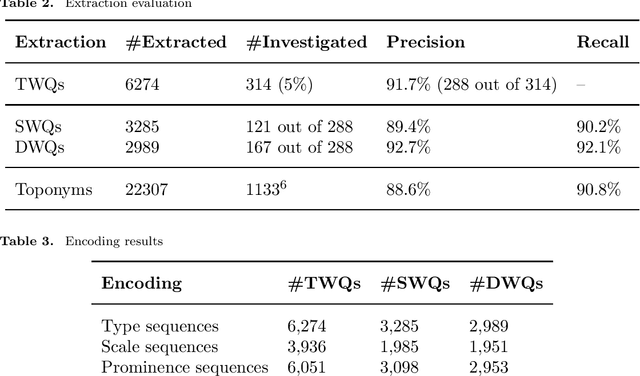Templates of generic geographic information for answering where-questions
Paper and Code
Jan 21, 2021



In everyday communication, where-questions are answered by place descriptions. To answer where-questions automatically, computers should be able to generate relevant place descriptions that satisfy inquirers' information needs. Human-generated answers to where-questions constructed based on a few anchor places that characterize the location of inquired places. The challenge for automatically generating such relevant responses stems from selecting relevant anchor places. In this paper, we present templates that allow to characterize the human-generated answers and to imitate their structure. These templates are patterns of generic geographic information derived and encoded from the largest available machine comprehension dataset, MS MARCO v2.1. In our approach, the toponyms in the questions and answers of the dataset are encoded into sequences of generic information. Next, sequence prediction methods are used to model the relation between the generic information in the questions and their answers. Finally, we evaluate the performance of predicting templates for answers to where-questions.
 Add to Chrome
Add to Chrome Add to Firefox
Add to Firefox Add to Edge
Add to Edge